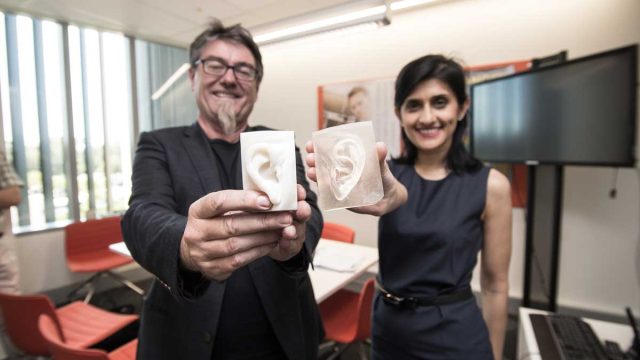Imagine 365 days of Christmas cheer!

December is a busy month for many of us in some regions of the world. It doesn’t matter if we are parents, aunts, uncles, or grandparents—the festive Christmas season keeps us busy. There are Christmas concerts to attend, Christmas celebrations to organize, and Christmas church programs to help with. Even those living in more secular societies get their full dose of Christmas cheer. Myriads of elves and Santa Clauses appear in shopping centers or on TV, together with reindeer and other holiday-themed paraphernalia. In the Philippines Christmas decorations come out in September and stick around until early January. Whether in the Northern or Southern Hemisphere, Christmas has a way of pushing into our lives.
But the story of the birth of Jesus is more than glitter, reindeer, parties, gifts, and relentless advertising. Most biblical scholars agree that the birth of Christ did not happen in December, but earlier, most likely in the autumn of the year.1 Yet regardless of the specific time, it’s the important transformative dimension of Christ’s birth that matters as we consider God’s plan of salvation that Christians (and Adventists) all around the world remember in December, for that moment in history changed everything.
When God came to live with and serve us as a human being, He didn’t choose a royal palace to make a Hollywood-style grandiose entrance. John tells us that Jesus came into His own—and His own did not receive Him (see John 1:11). The imagery of a newborn baby lying helplessly in a filthy manger used normally to feed animals communicates something about God’s character and priorities. Jesus came to serve, not to be served (cf. Matt. 20:28). When we read the Nativity story in the Gospels, we can sense the uncertainties, perhaps even fears, of Jesus’ parents. We can, however, also catch a glimpse of the joy of the moment when shepherds bow and angel choirs shout a Hallelujah chorus that even Händel could never replicate.
The Heart of Christmas
Most of us enjoy the carols or hymns associated with the season—at least for some weeks of the year. We cherish time with family and friends. We enjoy special meals together. But if Christmas is only about singing, eating, or celebrating community, we might as well go to a soccer game or a football game at which people sing, dance together, and enjoy plenty of food and drinks.
What makes Christmas special? Here are five key concepts that moved to the top of the list as we thought about the meaning and relevance of the festive season:
1: Christmas helps us to see each other more clearly and more realistically. Gift giving is a big part of most Christmas celebrations and a reflection of God’s biggest Gift, whose life began in a manger and ended—at least for a limited time—on a rough-hewn cross. As we see each other—when we truly see each other—we recognize that our own brokenness and flaws can also be seen in others. We recognize that we are all sinners and in need of grace, the grace that transforms and renews. Thinking about a neighbor, a family member, a grandchild, or a work colleague helps us look away from ourselves. A spirit of selfless giving is an entry-level antidote against selfishness and self-centeredness.
2: Once we have recognized the needs of the world that surrounds us (including our neighborhoods, our families, and our churches), we begin to engage. Jesus’ first coming is all about engagement. He engaged a lost world, found sin-sick people, and offered hope and encouragement to the hopeless and discouraged. We give because He has given us everything. Volunteerism during the months of November and December is usually very high. Giving selflessly of oneself not only is a blessing to others but also has significant health benefits for the person volunteering. Serving others strengthens our own organism, improves our moods, and lessens stress.2 But beyond being a physical and emotional blessing to our lives, engagement and giving works miracles in our hearts—and not just in November and December.
3: Christmas usually draws us together. The last 10 days of December are generally some of the busiest travel weeks during the year, especially when we look at the numbers globally. We look forward to seeing each other and enjoying each other’s company. It turns out that community was also important at Jesus’ first advent. Lowly shepherds were guided by angels to see their Saviour. As they entered the humble and, we imagine, cramped place of Jesus’ birth and saw a little baby in a manger, they pressed forward to worship Him whose words had spoken galaxies into existence—they just couldn’t see Him yet clearly, for He was tiny. Worship drew them together. Did Mary grow concerned as the shepherds pushed closer and closer to get a better glimpse? How did Joseph and Mary feel about the Wise Men, who looked so different from the people they were familiar with in Nazareth or Bethlehem? Christmas without a shared community is like a Northern Hemisphere winter without snow or the tropics without rain.
4: Fear is an ever-present reality in the Nativity story found in the New Testament Gospels. Mary is “troubled” when she meets the angel Gabriel (Luke 1:29). Shepherds are terrified when they see the glorious light surrounding an angel host (Luke 2:9). Herod and all Jerusalem are disturbed when they hear about the star the Wise Men from the East had been following (Matt. 2:3). Joseph must have been worried sick about his wife and the newborn as he is told to flee to Egypt by an angel of the Lord (verses 13-18). Like us, the members of the cast of the Nativity story knew real fear. However, they also knew deliverance and deep joy. Simeon, holding Jesus in his arms, rejoiced and praised God (Luke 2:25-35). As the Wise Men returned home, we can imagine them singing praise songs the entire journey. The shepherds rejoiced as they saw the “desire of all ages.” Christmas is all about overcoming fear and experiencing life-changing joy—the joy that transforms darkness into light and hopelessness into vision.
5: Hope saturates all the nooks and crannies of the Christmas story as the antidote of fear. This hope is based on God’s promises—those given long ago by prophetic vision (cf. Dan. 9:24-27), and also those uttered directly by divine messengers to some of the cast members of the narrative (e.g., Luke 1:26-38). Isaiah’s vivid description of what hope can really do offers this striking imagery: “But those who hope in the Lord will renew their strength. They will soar on wings like eagles; they will run and not grow weary, they will walk and not be faint” (Isa. 40:31, NIV). Other versions, such as the NKJV or ESV, use the verb “wait.” Hope, both as a noun and as a verb, describes the activity of waiting patiently. Our trust-filled waiting is an expression of hope. God’s people waited anxiously for the arrival of the Messiah in the first century A.D. They may have had wrong expectations about the kind of Messiah they waited for—but they waited. First-century Judaism was a hotbed of messianic expectations. This hope drove Simeon and Anna to wait in the temple to see the promised Saviour. This hope moved the Wise Men to travel large distances to see the promised King. And this hope comforted a young mother who kept all the promises given to her in her heart—even though she may not yet have understood them all. Christmas is a hopeful season, where light and music promises a different tomorrow.
Christmas Impacts Our Mind
It’s important to note that even our reference to the Christmas season points to how, from a secular perspective, the spirit of goodwill associated with Christmas has somehow been boxed into a “season” of no more than the month of December (give or take)—after which we resume our normal course of living in the “I world” that has defined the human condition since humanity’s fall in Eden introduced sin into this world.
In fact, the impact of the Christmas season and the marked change in many from an attitude of self-centeredness into one of other-centeredness—the common denominator rippling through acts of unselfish giving and positive relationships, and critical to overcoming fear and providing hope for the future—has led scientists to try to understand the impact that Christmas has on our brain. One small-scale study conducted by researchers at the University of Copenhagen, for example, attempted to locate the “center” of the Christmas spirit within the brain using functional magnetic resonance imaging (fMRI).3 The researchers showed Christmas-themed images to their study participants and found that among the participants who celebrated Christmas, there was an increase in brain activity in regions of the brain that all play a part in an individual’s sense of spirituality, as well as one’s bodily senses and the ability to decipher facial emotions. While this was a small study that requires replication on a large scale to validate the key findings, what it does do is point to the fact that the key attributes of unselfish acts that define the Christmas season can impact our brains.
Interestingly, the documented effects of unselfish acts on our brain and therefore how we subsequently think and behave toward others has been studied extensively. Numerous studies have pointed to the fact that acts of kindness boost levels of oxytocin—sometimes called the “love hormone” because it is critical to forming social bonds and trusting other people.4
God, in His infinite love, has hard-wired our brains to think, behave, and live as other-centered beings. However, while other-centeredness can reward our bodies and minds, one act of kindness cannot carry us through a few days or even a few hours. Waguih William IsHak, a professor of psychiatry at Cedars-Sinai Medical Center, frames this best: “The trick you need to know: Acts of kindness have to be repeated. . . . Biochemically, you can’t live on the three- to four-minute oxytocin boost that comes from a single act.”5
In order to fully realize the rewards of kindness and what it means to live in other-centeredness, as God originally designed us, acts of other-centeredness have to be repeated and have to be practiced—daily, hourly, not just for a season at Christmas. In other words, the goodwill of the Christmas season needs to be habitually lived out throughout the year because it’s these habits that will direct how we respond to life situations that will ultimately define our character. Put another way, our character ends up being the sum total of the habit patterns that were formed while living and responding to life’s unique experiences. “Never forget that thoughts work out actions. Repeated actions form habits, and habits form character,” noted Ellen White.6
Why is this important? The bottom line is this: Our character ultimately determines our destiny—not because of inherent goodness or what we can bring to the table, but rather because of how much we allow God’s Spirit to mold and shape us to reflect His image that He originally created us in: “The harvest of life is character, and it is this that determines destiny, both for this life and for the life to come.”7
Christmas Every Day
Looking beyond our own needs and engaging with the world that surrounds us in ways that blesses others cannot be part of what we do and who we are just once a year during the month of December. It needs to become part of the patterns of our lives and the attitudes we develop daily. Just as God reached deep into this world through the coming of Jesus as a little babe lying defenselessly in a dirty manger, we are called to live the other-centeredness visible in God’s rescue mission to Planet Earth. This focus on the needs of others helps us look beyond our own fears and experience a sense of community, for we can truly “be” only when we experience the “we” of our existence.
Christmas cannot just be a day, a week, or a month. Christmas needs to become a habit that reflects God’s unselfish giving and informs how we live our daily life, how we relate to one another in our families and neighborhoods, and how we deal with a world that
is often cruel and painful. We need more than the occasional three- to four-minute oxytocin boost—we need the Holy Spirit to reprogram our inner core being, as intimated by Paul in Romans 12:2: “Do not conform to the pattern of this world, but be transformed by the renewing of your mind. Then you will be able to test and approve what God’s will is—his good, pleasing and perfect will” (NIV). Christmas every day is a result of this transformation.
How Can We Learn Christmas Lifestyle Habits?
Thought patterns are changed by conscious decisions and deliberate actions, which in turn translate into habitual patterns of behavior that focus less on self and more on others. Here are a number of practical suggestions that may help in this process.
- Make the conscious decision to live a lifestyle of other-centeredness every day.
- Focus daily on deliberate acts of unselfishness toward others.
- Write down in a journal your daily experience of helping someone—not to gloat or to feel good about yourself, but rather as a means to reflect thoughtfully on the experience.
- Ask yourself how these deliberate acts have had an impact on you.
- Think about what this focus on the needs of others tells you about the character of God.
- Look for the joy of allowing God’s Spirit to transform your heart—for it’s all about Him and not about us.
1 A thorough and helpful discussion of the biblical and extrabiblical data can be found in Andrew E. Steinmann, From Abraham to Paul: A Biblical Chronology (St. Louis: Concordia Publishing House, 2011), pp. 219-255.
2 See https://www.volunteerhub.com/blog/volunteer-health/.
3 Anders Hougard et al., “Evidence of a Christmas Spirit Network in the Brain: Functional MRI Study,” BMJ. com, Dec. 16, 2015, online at https://doi.org/10.1136/bmj.h6266.
4 “The Science Behind Kindness and How It Benefits Your Health,” UniversityHospitals.org, Oct. 8, 2020, online at https://www.uhhospitals.org/Healthy-at-UH/articles/2020/10/the-science
behind-kindness.
5 “The Science of Kindness,” Cedars-Sinai Blog, Feb. 13, 2019, online at https://www.cedars-sinai.org/blog/ science-of-kindness.html.
6 Ellen G. White, The Upward Look (Washington, D.C.: Review and Herald Pub. Assn., 1982), p. 89.
7 Ellen G. White, Reflecting Christ (Hagerstown, Md.: Review and Herald Pub. Assn., 1985), p. 341.







